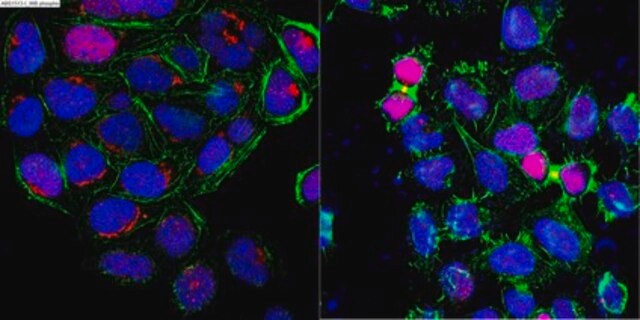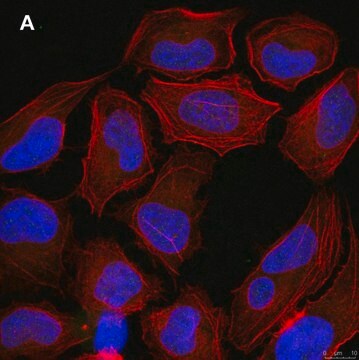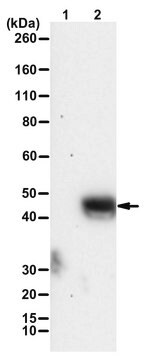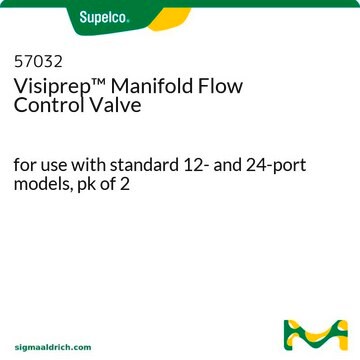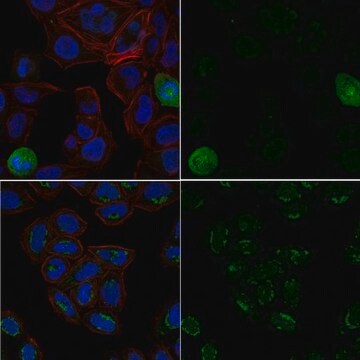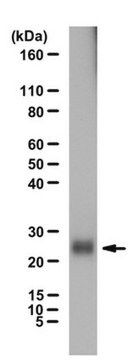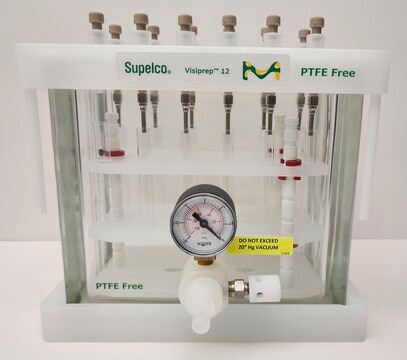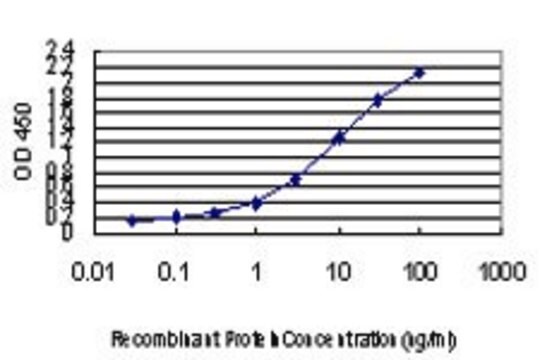About This Item
Polecane produkty
pochodzenie biologiczne
rabbit
Poziom jakości
białko sprzężone
unconjugated
forma przeciwciała
purified antibody
rodzaj przeciwciała
primary antibodies
klon
polyclonal
masa cząsteczkowa
observed mol wt ~28 kDa
oczyszczone przez
affinity chromatography
reaktywność gatunkowa
human
reaktywność gatunkowa (przewidywana na podstawie homologii)
mouse, chimpanzee, hamster, rat
opakowanie
antibody small pack of 100 μg
metody
affinity binding assay: suitable
western blot: suitable
izotyp
IgG
sekwencja epitopowa
N-terminal half
numer dostępu Protein ID
numer dostępu UniProt
Warunki transportu
2-8°C
docelowa modyfikacja potranslacyjna
phosphorylation (pSer67)
informacje o genach
human ... UBB(7314)
Opis ogólny
Specyficzność
Immunogen
Zastosowanie
Oceniane metodą Western Blotting z konstruktem zawierającym znakowany GST rekombinowany fragment ubikwityny fosforylowany na serynie 57.
Analiza Western Blotting (WB): Rozcieńczenie 1:1000 tego przeciwciała wykryło konstrukt zawierający rekombinowaną ubikwitynę znakowaną GST fosforylowaną na serynie 57, ale nie reagowało z konstruktem niefosforylowanym. (Konstrukt fosfo-ubikwityny: Dzięki uprzejmości dr Jesse Rinehart, Yale University, School of Medicine).
Testowane aplikacje
Test wiązania powinowactwa: Reprezentatywna partia tego przeciwciała wiązała peptyd fosfo-ubikwityny (ser57) z KD wynoszącym 1,0 x 10-12 w teście wiązania powinowactwa.
Uwaga: Rzeczywiste optymalne rozcieńczenia robocze muszą być określone przez użytkownika końcowego jako próbki, a warunki eksperymentalne mogą się różnić w zależności od użytkownika końcowego.
Postać fizyczna
Przechowywanie i stabilność
Inne uwagi
Oświadczenie o zrzeczeniu się odpowiedzialności
Nie możesz znaleźć właściwego produktu?
Wypróbuj nasz Narzędzie selektora produktów.
Kod klasy składowania
12 - Non Combustible Liquids
Klasa zagrożenia wodnego (WGK)
WGK 1
Certyfikaty analizy (CoA)
Poszukaj Certyfikaty analizy (CoA), wpisując numer partii/serii produktów. Numery serii i partii można znaleźć na etykiecie produktu po słowach „seria” lub „partia”.
Masz już ten produkt?
Dokumenty związane z niedawno zakupionymi produktami zostały zamieszczone w Bibliotece dokumentów.
Nasz zespół naukowców ma doświadczenie we wszystkich obszarach badań, w tym w naukach przyrodniczych, materiałoznawstwie, syntezie chemicznej, chromatografii, analityce i wielu innych dziedzinach.
Skontaktuj się z zespołem ds. pomocy technicznej